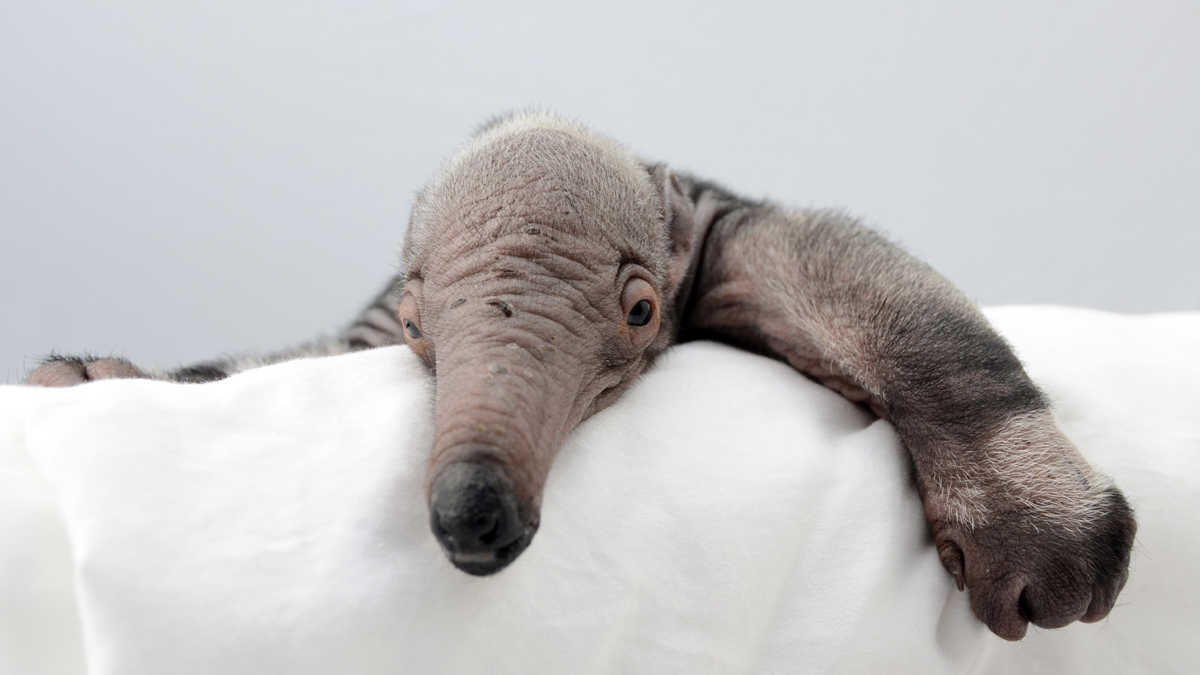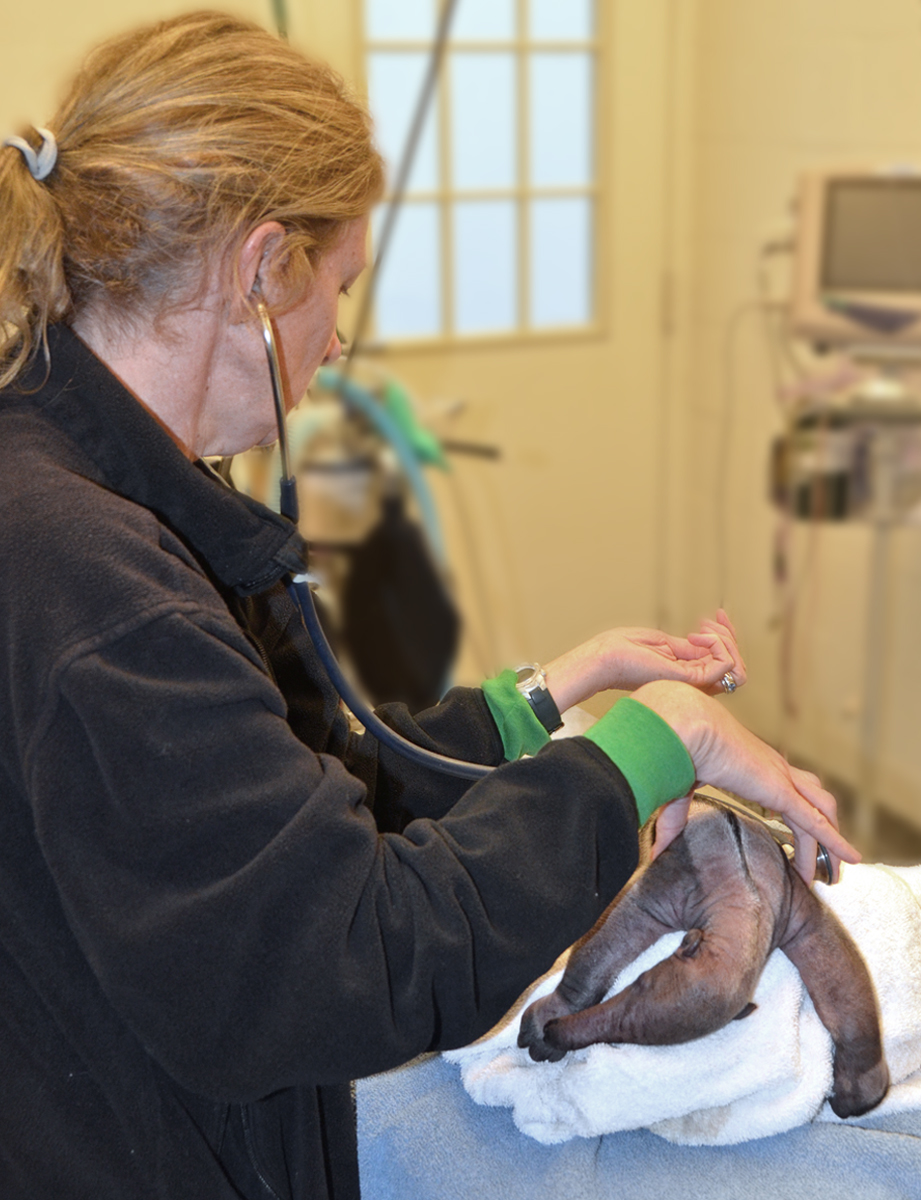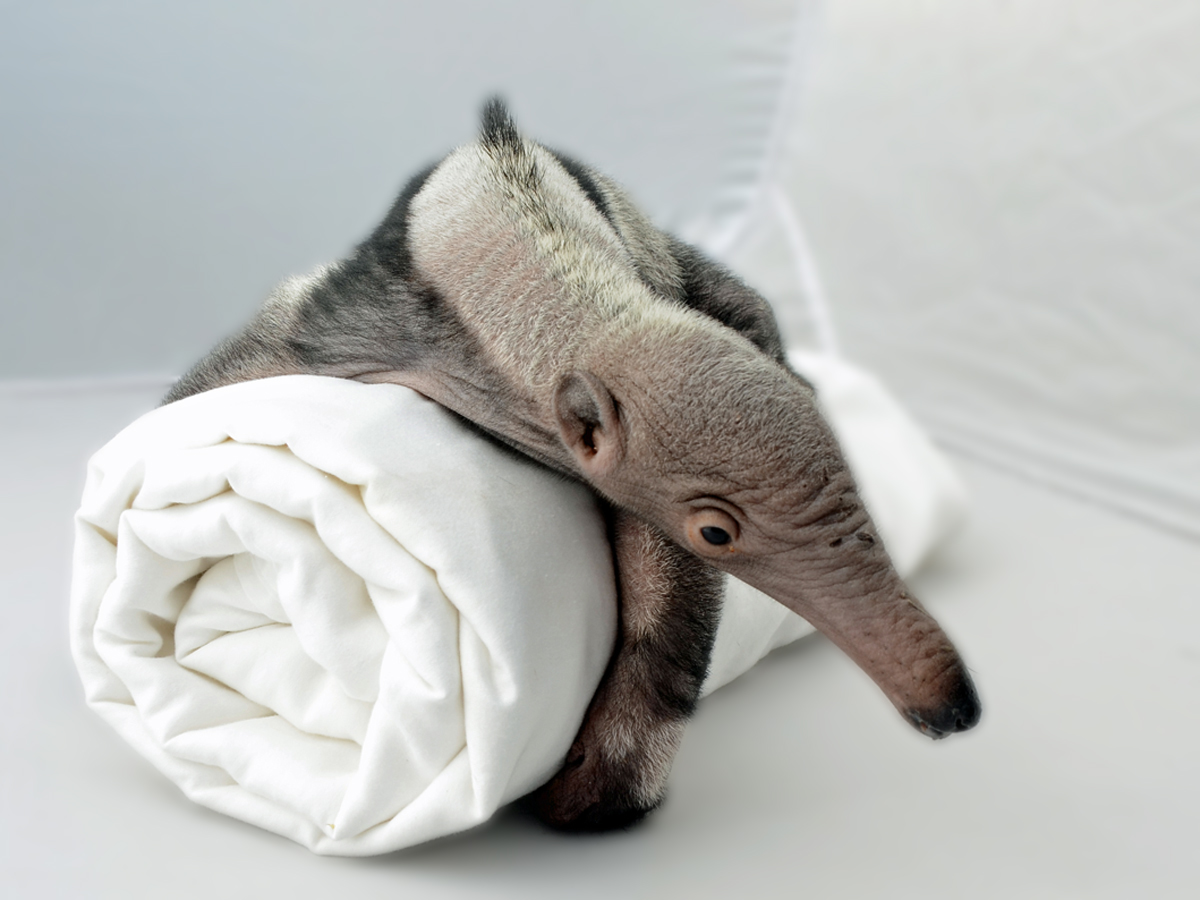Giant Anteater Born at Santa Barbara Zoo
Male Pup Won't Be on Public View for Several Months

The Santa Barbara Zoo is keeping its fingers crossed that its newest addition, a four-pound male giant anteater born March 1, stays hardy and healthy. “The prognosis for the little guy is good, but still somewhat guarded,” said Sheri Horiszny, the zoo’s director of animal programs. “Giant anteater pups have a 50 percent mortality rate in the first three months of life, and he did not get the valuable colostrum from his mother’s first milk for added immune support.”

The pup’s parents, 2-year-old Anara and 6-year-old Ridley, gave birth to twins, but the female pup did not survive for unknown reasons. “[Anara] is a first-time mom,” said Horiszny, “and she was not willing to care for two babies. This male pup was not being allowed to cling to her or nurse, so we began hand-rearing him on the afternoon of his birth.” The pup is being fed Esbilac, a puppy milk replacer. “He made it clear that he preferred this to the kitten milk replacer that we tried first,” added Horiszny.
The pup, which hasn’t been named yet, will not be on public view for several months, zoo officials said.
There have been 26 giant anteaters born at the Santa Barbara Zoo since 1975, said Julia McHugh, director of public relations, in a prepared statement. “The Zoo has been a leader in a nationwide study of giant anteaters, thanks in great part to Grandma, who had over 15 offspring,” McHugh went on, noting Grandma was the oldest giant anteater in captivity when she died in 2002 at the age of 31. The average anteater lifespan in captivity is between 20 and 23 years. Ridley, McHugh explained, was imported from a German zoo in 2008 as part of a cooperative breeding program of the Association of Zoos and Aquariums (AZA) to bring genetic diversity to North America facilities.

Giant anteaters are native to Central and South America but have suffered an estimated 30 percent population loss over the the last 10 years because of habitat destruction, hunting, and illegal trade. The Union for the Conservation of Nature lists the species as “vulnerable.” They grow up to three to four feet long and weigh between 40 and 85 pounds when fully grown. Though they have no teeth, giant anteaters have powerful claws to rip apart termite and ant mounds, and use 18- to 24-inch tongues to slurp up to 35,000 ants in a single day.



